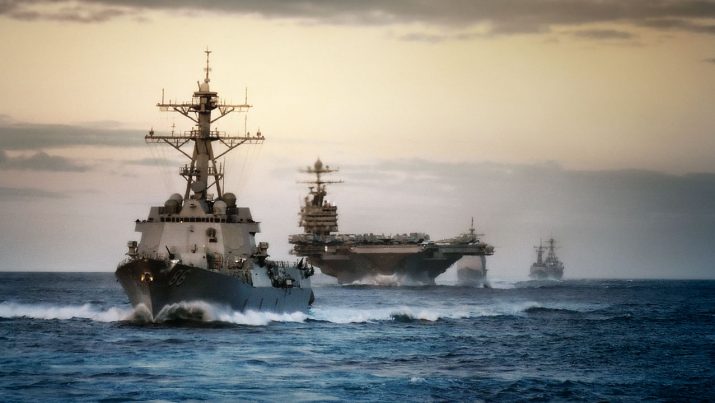
Host of rising threats are challenging the U.S. Navy in ways not seen since the Cold War
Tuesday, May 24, 2016 by usafeaturesmedia
http://www.nationalsecurity.news/2016-05-24-host-of-rising-threats-are-challenging-the-u-s-navy-in-ways-not-seen-since-the-cold-war

(NationalSecurity.news) As China builds and fortifies artificial islands in the South China Sea, the People’s Liberation Army Navy is also launching new, quiet nuclear-powered submarines and improving ballistic missiles and aircraft.
Meanwhile Russia is also set to launch newer, faster and quieter nuclear submarines, even as Moscow is nearing completion on the largest, most destructive ICBM in the history of the world.
All this comes as smaller powers like Iran threaten to close the Persian Gulf to commercial shipping, and North Korea tests and improves its nuclear arsenal.
And of course, when you throw in piracy, cyber threats and drug and people smuggling, clearly the U.S. Navy – still the stronger fleet on the high seas – is facing its greatest challenge in a generation, and meeting the challenge will require investment in new capabilities and technologies on a scale that is comparable to the Cold War.
As reported by the Washington Examiner, the threats to traditional U.S. maritime superiority are mounting.
“For the first time for what I would say is roughly 25 years, the United States is back to an era of great power competition,” Adm. John Richardson told the National Press Club in January.
A junior officer when the Soviet Union collapsed in 1991, Richardson spent his early years serving in a Navy where sailors listened to cassette tapes on a Walkman; it was a time when the U.S. was not being significantly challenged at sea.
But those days are long gone.
“That era is over,” he said. “Both Russia and China have advanced their military capabilities to act as global powers again. Their goals are backed by a growing arsenal of high-end warfighting capability.”
When the threats are combined, today’s U.S. Navy is facing unprecedented challenges. And though that seems to have always been the case, the rise of technology compounds today’s threats exponentially.
What’s more, it isn’t just the rise of technology, but the rapid pace at which those technologies are developed, adopted and adapted to military use.
Submarines, especially, are beneficiaries of rapidly advancing technologies.
Russia, for example, has intentionally leaked plans for a new small, unmanned drone submarine that would reportedly be stealthy and capable of detonating a nuclear weapon in a harbor or port facility, striking a major economic blow to the targeted nation.
But also, conventional nuclear-armed and powered submarines are advancing in capability.
“Our principal advantage for decades in this world has been that our boats were effectively invisible. That is an assumption we are not going to be able to consistently make going forward,” warned retired Adm. James Stavridis, the former NATO supreme allied commander and current dean of the Fletcher School at Tufts University.
“Technology is increasingly favoring detection, and therefore over time our advantage is going to decrement. It’s not going to suddenly go away. We’re not going to suddenly fall over a cliff and find ourselves with transparent oceans. But it’s trending in the wrong direction.”
He says he sees a trend that marries better optical and acoustic sensors with high-powered data processing, that enables systems to isolate tiny anomalies that can be associated with submarines.
“It has not happened yet, but over time it will be easier to penetrate the ocean, particularly the deep ocean, where our boats historically had enormous advantage,” Stavridis said.
The former NATO chief also said the U.S. was losing its advantage in the area of cruise missiles, a mainstay of U.S. naval weapon systems. He says their offensive capacity is eroding because the capacity to defend against them is increasing.
For his part, Richardson has issued command guidance to increase the speed at which all levels of the service adapt and learn.
“We must speed up,” Richardson said in January. “The margins of victory in this environment are razor thin, but they are absolutely decisive … This is truly a game of inches.”
More:
- New details emerge about Russia’s new, and terrifying, undersea nuclear weapon drone
- CIA says leak of Russian nuclear-armed drone sub was intentional
- China edging U.S. advantage in submarine warfare
NationalSecurity.news is part of the USA Features Media network. Check out our daily headlines here.
Tagged Under: Tags: China, Iran, nuclear weapons, Russia, submarines, U.S. Navy






